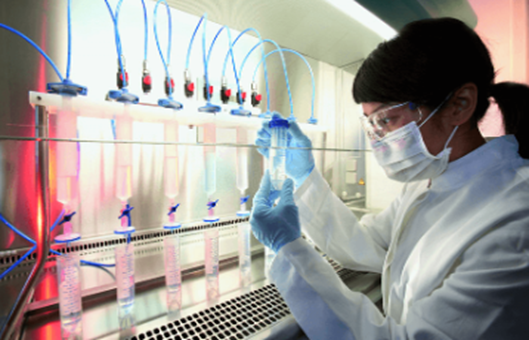Nuclear Transplantation Protocol of Mammalian Cells
GUIDELINE
- Nucleus transplantation, where the nucleus of one cell is put into another cell by microinjection. The former is the donor, which can be the stem cell nucleus of an embryo or the nucleus of a somatic cell. The recipient is mostly the egg of an animal. Because of the large size of the egg, easy to operate, and through development, the characteristics can be expressed, so the cell nucleus transplantation technology, mainly used to study the embryonic development process, the function of the nucleus and cytoplasm, as well as the interrelationship between the two.
- This technique has a history of several decades, in 1952, Briggs and King obtained the first successful nuclear transplantation in amphibians, which made several fundamental questions of developmental biology have been answered, and Gurdon used the nucleus of the epithelial cells of the African clawed toad and other somatic cells for transplantation to establish the fact that the nucleus of the already differentiated cells can develop normally. China's embryologist Mr. Tong Di Zhou and others have done a lot of work on the nuclear transplantation of fish cells. They obtained the carp crucian carp nucleus transfer fish for the first time around 1976, which not only has theoretical significance but also opens up a new way for fish breeding.
METHODS
- Ovulation-stimulating hormone is injected into female mice to stimulate ovulation and remove the eggs.
- Using the fertilized egg of a white mouse as the recipient, under a microscope with a phase contrast interferometer, the tip of a pre-prepared nucleus removal syringe is inserted into the zona pellucida of the fertilized egg with the aid of a micromanipulator, allowing the needle to pass through the zona pellucida only without piercing the plasma membrane of the egg.
- The needle is then directed at the male nucleus and sucked into the syringe through the plasma membrane. The needle is then directed at the female nucleus, and in the same way, the female and male nuclei are sucked to the front of the syringe, and then the syringe is slowly withdrawn.
- At this time, the egg plasma membrane can be seen to be very elastic, between the mouth of the tube and the zona pellucida, the plasma membrane is pulled into a thin filament, and then disconnected, forming only the cytoplasm of the enucleated egg and the two prokaryotic nuclei and a small amount of cytoplasm inside the syringe, outside the plasma membrane wrapped in the two parts.
- The enucleated egg is used as the recipient.
- In the same way, the male and female prokaryotic nuclei of the fertilized egg of the donor black mouse are inhaled into the syringe, and a small amount of Sendai virus (Inactivated Sendai Viras) is then inhaled.
- The syringe is then moved to the enucleated egg, and the mouth of the syringe is allowed to pass through the original hole in the zona pellucida into the perivitelline space. At this time, the syringe is gently rotated so that the female and male prokaryotic nuclei encapsulated by the plasma membrane and the Sendai virus enter into the perivitelline space between the zona pellucida and the plasma membrane of the fertilized egg and the syringe is then withdrawn slowly.
- If we continue to observe, we can see that under the action of the virus, the plasma membrane carried by the nucleus of the migrating cell comes into contact with the plasma membrane of the denucleated cell and the plasma membrane, the plasma membrane slowly dissolves and disappears, and the male and female prokaryotic nuclei enter into the fusion process of the receptor egg.
- The nucleus is moved to the egg, the actual nucleoplasmic hybridization.
- If the operation is successful, more than 90% of the eggs can be cultured in a carbon dioxide incubator to develop to the blastocyst stage and nuclear transplanted nucleoplasmic hybrid mice can be obtained after embryo transfer.
NOTES
During the whole process of nuclear transplantation, each step should be strictly operated to minimize the damage to the cell membrane, plasma, and nucleus, and the vessels used should be strictly sterilized to prevent contamination, and to improve the survival rate of each step.
